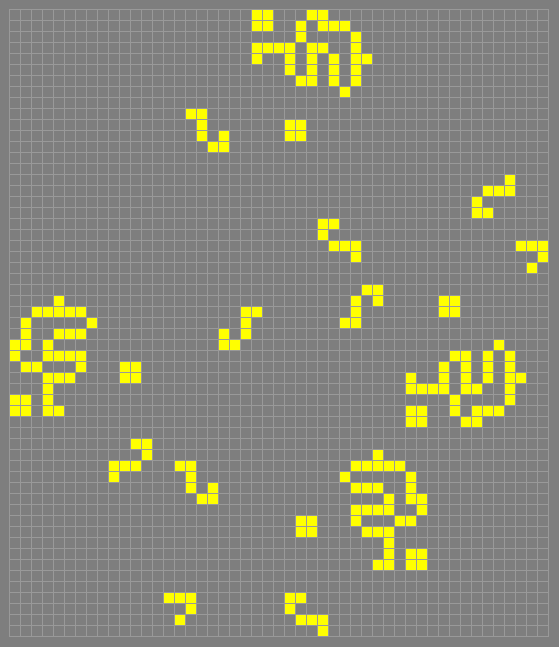An arrangement of four 90-degree reflectors that can
be placed into the path of a glider so as to delay it by an
adjustable number of generations, without changing its lane. More
generally, any combination of circuits may be referred to as a
trombone slide, if the grouping can be moved as a single unit that
functions as a 180-degree glider reflector.
The smallest known trombone slides are made using Snarks. In the
trombone slide shown below, sample input and output gliders are
shown. The input glider will reach the same output location 128
generations sooner if the trombone slide is removed.
If the top and left Snarks are moved together diagonally to the
upper left by N cells, then the glider delay is increased by 8N
generations since the glider has to travel N more cells in each
direction. This sliding action gives the trombone slide its name.
If only the final Snark is moved, then the output glider's path can
be altered by a number of full diagonals.

Trombone slides made of the same type of component cannot alter the
glider path by half-diagonals, and can only change the timing by
multiples of 8 generations. For other timing changes, different
components are necessary. These may be stable like the
Silver reflector or the colour-changing example shown in the
reflector article, or periodic like the various bumpers.









